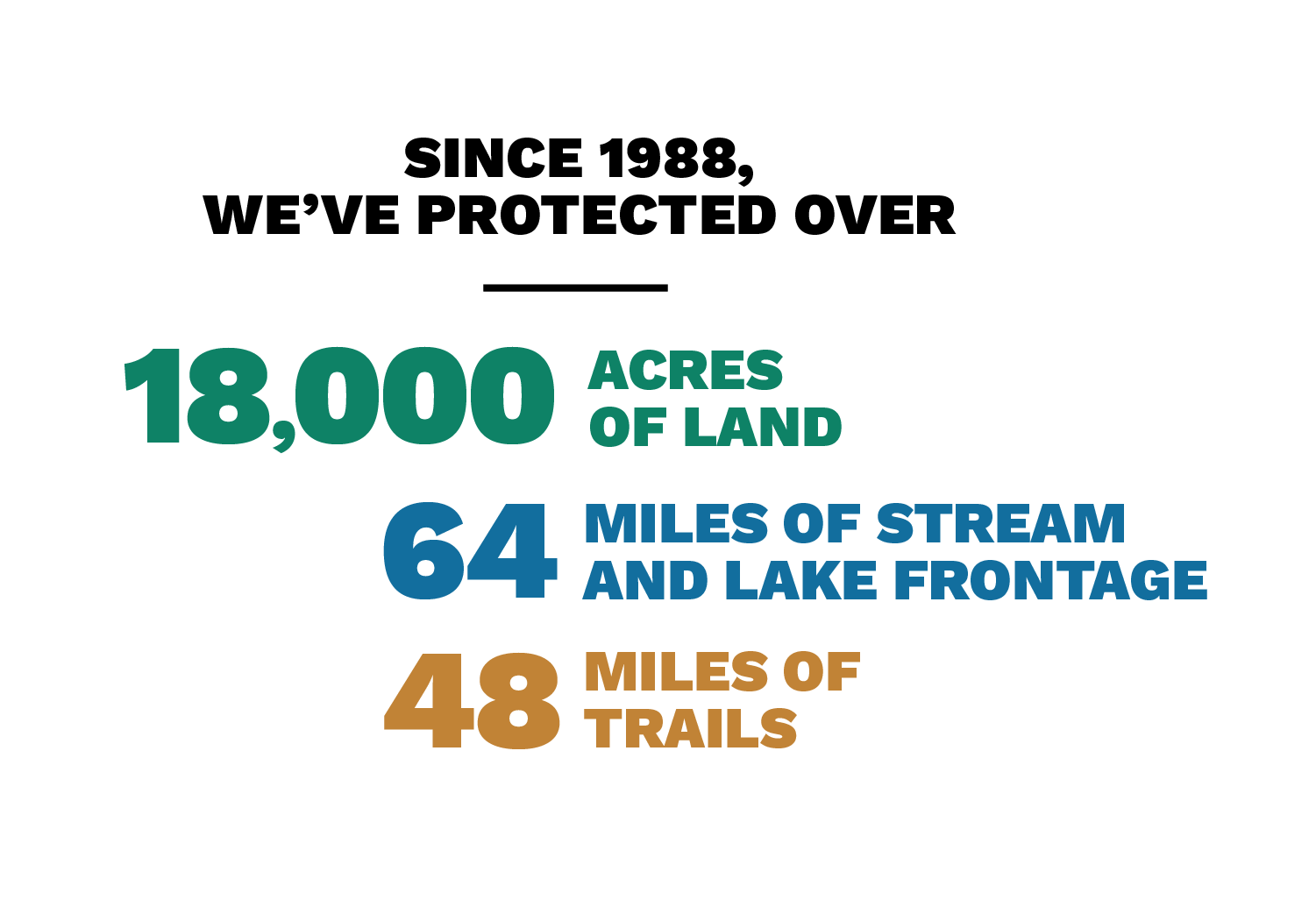For the Love of Trees: John Herrold Protects His 158-Acre Forest
From our 2008 Summer Newsletter
John Herrold was just a baby when he started coming north to Lake Leelanau with his family from their home in Detroit. His father, Edward, was a life-long General Motors employee who saved up his three weeks of vacation every year to spend time in a rented cottage on the lake. Here, they escaped the heat of the city and spent long days swimming, fishing and playing in the woods.
One year, Edward decided it was time for his family to venture west to see the Grand Canyon. He booked a train trip instead of the cottage, but when he announced his plan, John’s older sister Joan, burst into tears. Her heartfelt wailing threw Edward, who had assumed the family would be excited by his plan for a western adventure.
The trip was not to be. “He caved in after about ten minutes,” laughs John. The train tickets were cancelled, and another idyllic vacation on the lake was preserved. “To me, Leelanau has been more ‘home’ to me than where I grew up in Detroit,” says John, now 67. When he turned 12, his parents bought a place of their own on Lake Leelanau. After high school, John went off to the University of Michigan and earned a teaching degree. Soon after, he decided that he, too, must own a slice of Leelanau. At age 26, he found just what he was looking for: a 120-acre parcel with four streams running through.
The land featured patches of hardwood forest, but much of it had recently been logged. The science teacher dreamed of planting thousands of trees and restoring the land for the benefit of wildlife and the environment. He asked his parents to lend him the money to buy the land.
His parents obliged. “I paid them back bit by bit, a little out of every paycheck,” says John, who would later purchase another 40 acres from his neighbor. Eager to begin restoring the land, he contacted the organization known today as the Leelanau Conservation District. A District Conservationist, Joe Luellen, would guide John’s efforts in the ensuing years.
John’s earliest, massive project came the first summer after he bought the land: planting 10,000 red pine seedlings on a severely eroded hilltop. He enlisted his dad to help. “We did it in one single weekend,” he recalls. “It was brutal. But it was a good time to plant them, a wet year, and most of them took.”
Forty years later, that hill is now a cool, spongy pine forest. On the day I tour the land with John, we walk a trail lined with berry bushes and shrubs, grown from “wildlife packets” provided by the conservation organization. Luellen said that the shrubs would help join two forested areas, one of which shelters the headwaters of a large stream. If John planted the wildlife packets, Luellen promised that “the songbirds would be dancing back and forth between the stream and the shrubs,” says John. And that’s exactly what happened. On our walk, finches and sparrows flit past and the woods are filled with their songs.
John also enlisted the help of Consulting Forester Steve Alguire to manage timber and ensure a healthy forest. Only one selective cut has been done in 40 years. “To me, the concept of cutting down a tree is absolutely alien, but I also understand that you have to thin trees from time to time to make sure they don’t choke themselves out,” he says. John points out an area with an ideal mixture of young, “adolescent” and mature trees and credits Alguire’s expert advice. “I can tutor you in physics or chemistry, and teach you how to fly an airplane, but I can’t mark trees for thinning. It takes a professional,” says John.
In the 40 years since he bought the land, John has married, raised a son, divorced, learned to fly, and remarried again just three years ago. He and his new bride, Ardis, and son Bill, spend time in a garage-like building converted to a home on the land. He also cleared a half-mile long runway and built a single plane airplane hanger. John flies back and forth between Leelanau and Arizona, where he spends the winter. (Ardis still teaches in Grosse Pointe at the school where they met, so their time is split among the three locales.) Every year, the couple throws a giant party in the hangar for their many friends and former students, and recently hosted a fundraising event there for John’s church. He also donates an air tour to our auction every year.
Last year, when John emailed to donate to the auction again, he began asking questions about preserving his land. He’d read about the tax changes and said he’d always wanted to make sure his land would never be developed, but needed to learn more. He met with Matt Heiman, and worked out a plan to meet his modest needs. Among them: a single home site, provisions for maintaining his grass runway and a field to park cars for his big annual party. “I can’t tell you how happy I am to have done this,” he says about his conservation easement agreement. “I didn’t know it was possible to do what Matt and I have worked out together. I never ever, wanted this place to be developed and was worried that might happen some day. This solves it. There will never be a Walmart super store here.”
As we walk back toward the red pine trees, he talks about organizing a collection of “before and after photographs” he’s taken of his land over the years. “My goal always was to make sure this forest would be better off 50 years from now, and for my son Bill to inherit a healthier stand of trees. I think I’ve done that. I just wish my dad could see it today,” says John, pausing to gaze up at the trees. “But I have a feeling he’s doing just that, and looking down on us now.”



